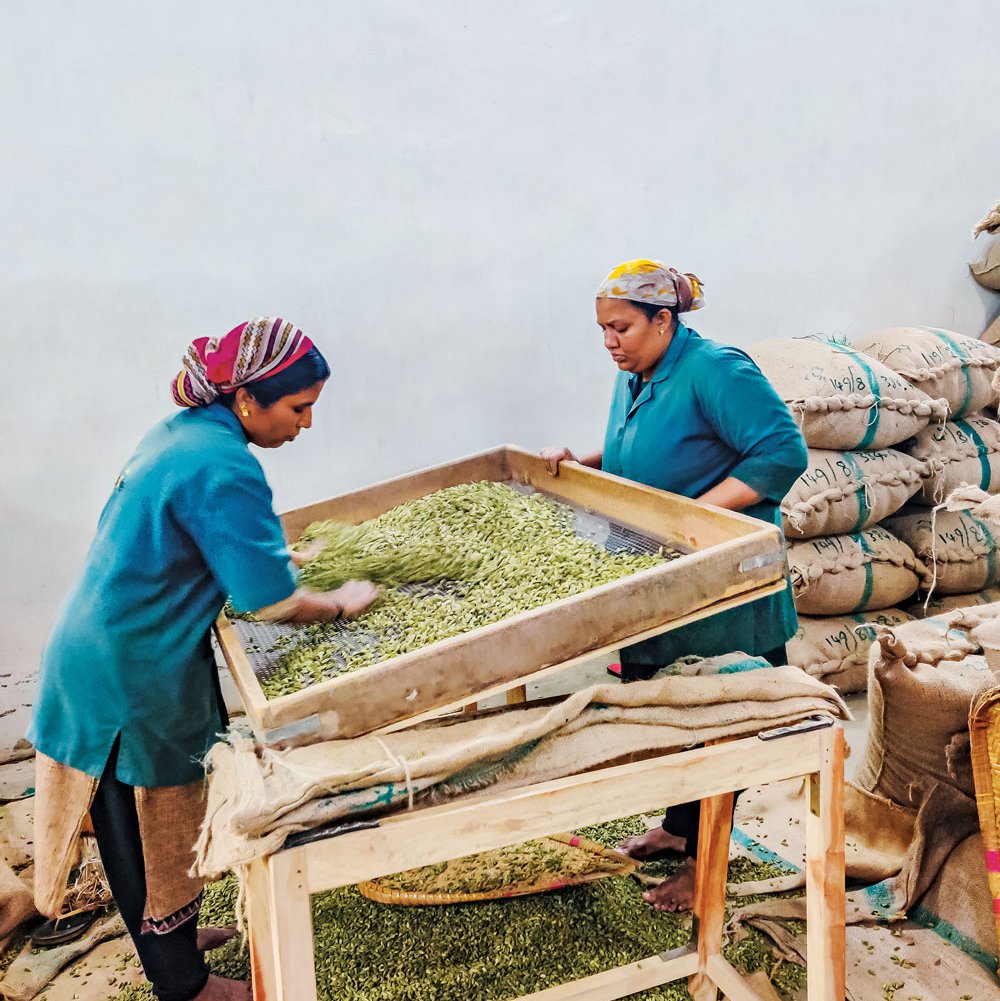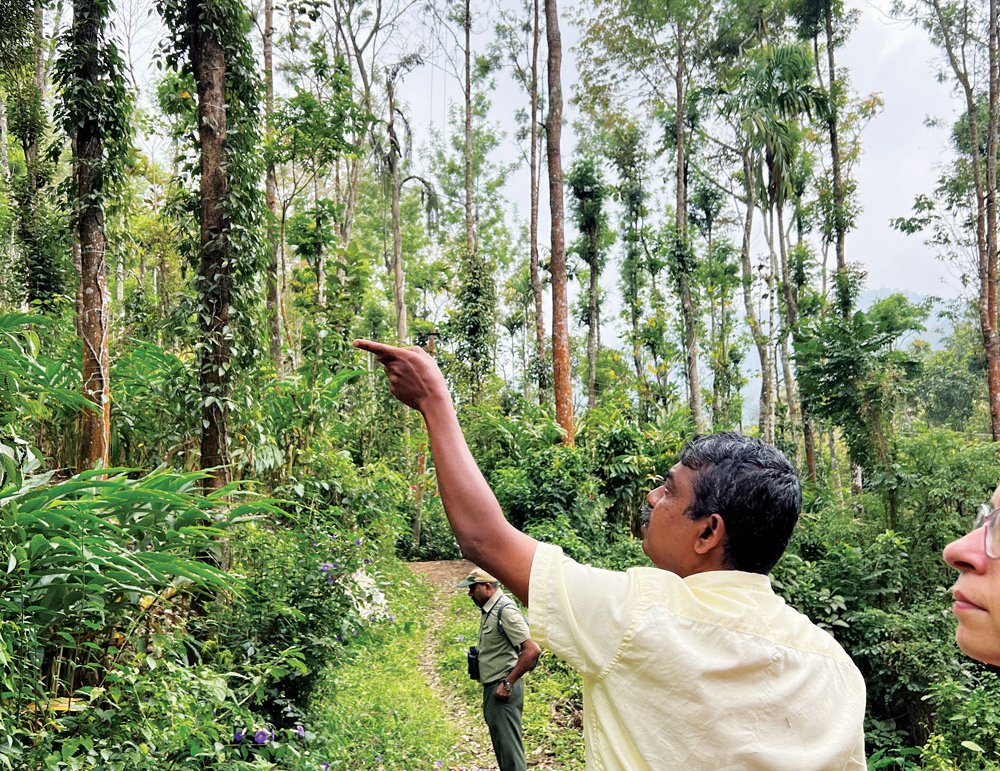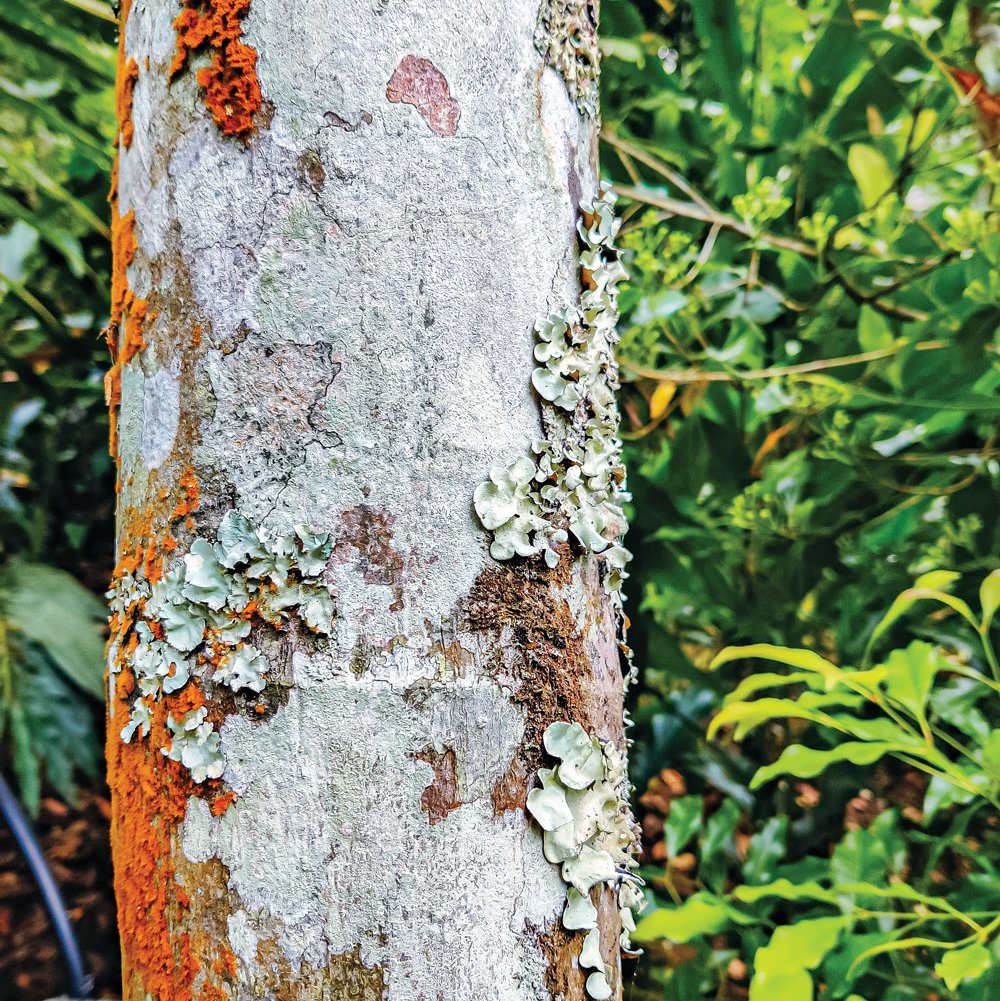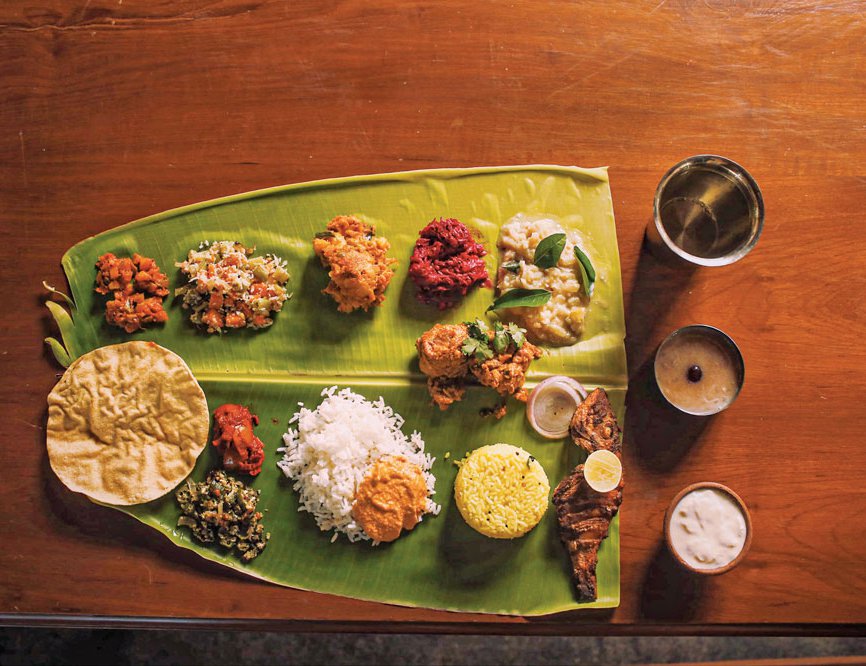Winding my way through Kerala’s Highlands, all I can see is miles of rolling emerald hills studded with tea and coffee estates interspersed with thickly forested hillsides. There’s a slight nip in the air and delicate mist clings precariously to treetops.
Part of India’s Western Ghats, which is a UNESCO World Heritage Site, Thekkady is a biodiversity hotspot home to a wealth of flora and fauna, including tigers, elephants, great Indian bison and great Indian hornbills. Pepper, turmeric, ginger, cardamom, along with several other spices, grow here in abundance, which is what attracted Arab, Dutch, Portuguese and English traders to India’s Malabar and Coromandel coasts centuries ago. It is also the reason for my visit to two CGH Earth Group properties in South India – Spice Village in Kerala and Visalam in Tamil Nadu. CGH Earth has built its portfolio of properties based on three core values: adopting local ethos; benefiting the community; and sensitivity to nature. Each property offers immersive experiences that highlight their region’s culture and culinary traditions.
My first stop, Spice Village, “is a reimagined tribal village set in a botanical garden. It is luxury that complements nature and promotes conservation,” explains Harikrishnan Nair, the general manager.
At 914m above sea level, it is a lush oasis filled with birdsong occasionally broken by the calls of Nilgiri langurs visiting from the nearby Periyar Tiger Reserve. Cottages here are modern interpretations of the local Mannan tribe’s huts, complete with elephant-grass thatched roofs crafted by the tribals. The interiors are light and airy with cool stone floors and minimalist décor.

Giant sieves are used to sort cardamom to find 8mm pods, which are exported to other countries

Sudheer PA explains the intricacies of growing cardamom and pepper during a visit to his plantation
The 14-acre property is criss-crossed by pathways flanked by trees so tall that I crane my neck to catch sight of their tops. The canopy is home to a few giant Malabar squirrels, which I catch sight of during a tour of the grounds with resident naturalist Prateesh, who draws my attention to giant palms that have been around since the Jurassic era; a Robusta coffee tree from which he snaps off a bean and shows me the raw fruit – for some reason I’d never imagined a coffee bean being white; aromatic allspice and curry leaf trees, and much more.
“Kerala is the land of spices. You will learn more about it during the spice plantation tour tomorrow,” Hari tells me during dinner at 50 Mile, Spice Village’s concept restaurant where each ingredient, apart from salt, is sourced from within a 50-mile radius of the property in effort to reduce their carbon footprint and support local businesses.
Chef Praveen K, executive chef at Spice Village, was tasked with creating a set menu that reflected local traditions. “We got recipes from the tribe. We also learned that they don’t use spice powders, barely any oil, no salt, nor do they eat rice,” explains Praveen. “They make spice pastes from scratch using fresh turmeric root, red chillies, coriander seeds and other aromatics, which they grind on a large stone.”
In keeping with that tradition, Praveen’s team avoids using mass-produced spice powders and blends as far as possible. The green peppercorn grilled beef I’m served is marinated in a paste made from fresh green peppercorns, ginger, garlic and curry leaves and then slow-cooked to allow the flavours to develop. This along with braised mutton and a local vegetable stew are served with kodo and little millet. Incidentally, I had harvested some of the veggies in the stew from the organic farm on the property, which gave me a whole new appreciation for the term ‘farm to table’.
The following morning, I stroll up a path into the Cardamom Hills. Dappled sunlight dances across the branches of trees, many of which I realise are familiar aromatics like cinnamon, nutmeg, allspice and I also spot black stone flower, an edible lichen that grows on tree trunks.
We veer off the path to scrabble up the hillside where I’m suddenly surrounded by cardamom plants. “We can collect anywhere from 90,000-95,000 kilogrammes of cardamom from an area of 5,000 square kilomtres during peak harvest season in July and August,” says Sudheer PA, plantation owner and spice exporter. Thekkady’s mild climate, high altitude and heavy rainfall have created the perfect conditions for cultivating spices. “Cardamom, pepper, ginger and turmeric are the four spices that are native to the Western Ghats. The rest of the spices came from other countries.”
Sudheer points to pepper vines growing on coral trees whose trunks have spikes on them which support the vines as they grow. “Green, black and white pepper come from the same plant. We pick tender green pepper in November, which is then dehydrated to get rid of 65 per cent of their water content. A harvest of 10-11 kilogrammes yields only 1 kilogramme of peppercorns. This type of pepper is more aromatic rather than spicy.”
I also learn that mature dark green pepper is harvested in March. The peppercorns are washed then left to dry on mats for four days, after which they turn black. If peppercorns are left on a tree until May, they turn red. They’re then put in sacks which are immersed in water for 25-30 days. The water is changed daily. After that period, the peppercorns are taken out of the water, gently massaged to remove their skins then exposed to sunlight. This results in white pepper.
This experience also includes lunch at Sudheer’s house. His wife Shafi, an incredible cook, makes traditional chicken curry cooked over a wood fire, iddiyapam (also known as string hoppers in Sri Lanka), fish fry and, what I think is, the most delicious chutney in the world – from fresh nutmeg fruit ground together with curry leaves, garlic, ginger, green chillies, salt and freshly grated coconut. The resultant condiment is sour, tangy with a mild bite and I end up eating spoonfuls of it straight out of the grinder.
The community’s ties with Southeast Asia also introduced them to mace, nutmeg, cloves and star anise, which they incorporated into their fiery cuisine.

Black stone flower, or kalpasi, is an edible lichen that features prominently in Chettiar cuisine

The traditional lunch on a banana leaf is always served in a particular order and there's a specific order in which this meal must be eaten
My next destination, Visalam, lies a few hours away in a flat, dry region known as Chettinad in Tamil Nadu, which is made up of 71 villages. The wealthy mercantile Chettiar community that had flourishing businesses in Myanmar, Malaysia and Singapore right up until World War II, built opulent mansions here with teak from Burma, marble and chandeliers from Italy and glazed ceramic tiles from England. Most of these mansions now lie derelict, but a few lucky ones have been saved from decay by hotel chains or families that continue to pay for their colossal upkeep. The community’s ties with Southeast Asia also introduced them to mace, nutmeg, cloves and star anise, which they incorporated into their fiery cuisine.
Visalam was a gift from a father to his only daughter. Built in 1939, it retains all its old-world charm with high-ceilinged rooms and suites surrounding a central courtyard. Photos of the owner’s family still line the walls of communal areas along with relics from bygone eras such as a radio from the early 1900s along with a gramaphone.
This boutique hotel’s idyllic garden, with bright splashes of orange, pink and white bougainvillea, is where breakfast is served every morning. It’s where I sit down with Sam John, general manager, who tells me more about the property. “When CGH Earth took over the house, we did a little restructuring...installed modern bathrooms, added the swimming pool and renovated the kitchen. And this area (he gestures to the garden around us) were stables where horses and cows were kept.”
The kitchen is my next stop for a traditional lunch served on a banana leaf. Should you opt for this meal, I’d recommend skipping breakfast if you are to successfully make your way through all 17 items on the menu. I start with spiced buttermilk, pickles, sambar and traditional vegetable preparations before moving on to Chettinad chicken curry, mushroom biryani, fish fry and end on a sweet note with parippu payasam, a dessert made from lentils.
One of the activities on offer here is a cooking class with Vasantha, a lady from the local village who used to cook for a Chettiar family before she joined Visalam. Although she doesn’t speak English, I watch and learn as she prepares mushroom pepper fry. Apart from the iconic Chettinad masala powder, it is also flavoured with whole spices including fennel seeds, dried red chillies, cinnamon sticks, bay leaves, peppercorns and kalpasi (black stone flower), which is a trademark of Chettiar cuisine. That might seem like a tastebud overload to some but “we don’t compromise on authenticity,” says Sam. “We may reduce the spice slightly on request, but our chefs don’t play around with the recipes.”
Visalam is surrounded by villages that are home to well-maintained mansions that are open to visitors, small handloom weaving units as well as an ancient rock-cut temple built in the 9th century CE. On my last day, I set out with my guide Shiva, who is passionate about local history, to see famous Athangudi floor tiles being made. A skill passed down through generations, artisans create handmade tiles using a mixture of cement and local soil set on glass plates. They often use their own artistic imaginations to decorate the tiles with free-hand designs using bright colours like red, green, yellow and blue. I couldn’t resist buying one as a keepsake of a most memorable trip to my home country.

